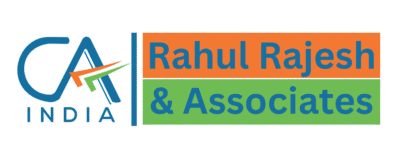**Corporate Social Responsibility (CSR) Audit: Assessing Social and Environmental Impact**
A CSR audit, also known as a sustainability audit or social responsibility audit, is a systematic evaluation of a company’s activities and policies to ensure that it is operating in a socially responsible and sustainable manner. CSR audits help organizations identify, measure, and manage their impact on the environment, society, and stakeholders. Here’s an overview:
**1. Definition:**
**a. CSR Audit:**
– A CSR audit is a comprehensive examination of a company’s policies, practices, and impacts related to social responsibility and sustainability. It assesses the organization’s commitment to ethical, social, and environmental considerations.
**b. Key Components:**
– Evaluation of environmental practices, social initiatives, governance structures, stakeholder engagement, and the integration of ethical principles into business operations.
**c. Benefits:**
– Identifies areas for improvement, demonstrates commitment to sustainability, and helps build trust with stakeholders.
**2. Environmental Impact Assessment:**
**a. Definition:**
– An environmental impact assessment evaluates the company’s impact on the environment, considering factors such as energy consumption, waste generation, emissions, and resource utilization.
**b. Key Components:**
– Measurement of carbon footprint, energy efficiency assessments, waste management practices, and adherence to environmental regulations.
**c. Benefits:**
– Enables organizations to minimize their environmental footprint, comply with regulations, and contribute to environmental sustainability.
**3. Social Responsibility Evaluation:**
**a. Definition:**
– Social responsibility evaluation assesses how a company’s activities impact society, including its employees, communities, and broader stakeholders. This may include labor practices, community engagement, and social initiatives.
**b. Key Components:**
– Assessment of labor practices, community involvement, diversity and inclusion initiatives, social impact programs, and adherence to human rights standards.
**c. Benefits:**
– Enhances the company’s reputation, fosters positive relationships with stakeholders, and contributes to social well-being.
**4. Governance and Ethical Practices:**
**a. Definition:**
– Governance and ethical practices evaluation examines the company’s governance structures, adherence to ethical principles, and transparency in decision-making.
**b. Key Components:**
– Examination of corporate governance practices, ethical codes of conduct, anti-corruption measures, and transparency in financial reporting.
**c. Benefits:**
– Strengthens corporate governance, promotes ethical behavior, and builds trust among investors, customers, and employees.
**5. Stakeholder Engagement:**
**a. Definition:**
– Stakeholder engagement assesses how well the company involves and communicates with its stakeholders, including employees, customers, suppliers, and the local community.
**b. Key Components:**
– Analysis of communication strategies, feedback mechanisms, and efforts to address stakeholder concerns and expectations.
**c. Benefits:**
– Enhances relationships with stakeholders, ensures better alignment with societal expectations, and promotes mutual understanding.
**6. Legal and Regulatory Compliance:**
**a. Definition:**
– Legal and regulatory compliance assessment evaluates the company’s adherence to local and international laws and regulations related to social and environmental responsibilities.
**b. Key Components:**
– Review of compliance with labor laws, environmental regulations, human rights standards, and other relevant legal requirements.
**c. Benefits:**
– Mitigates legal risks, demonstrates commitment to compliance, and avoids potential reputational damage.
**7. Supply Chain Responsibility:**
**a. Definition:**
– Supply chain responsibility assessment examines the social and environmental impact of a company’s supply chain activities, including sourcing, production, and distribution.
**b. Key Components:**
– Evaluation of supplier practices, responsible sourcing, fair labor practices, and efforts to reduce the environmental impact of the supply chain.
**c. Benefits:**
– Enhances transparency in the supply chain, reduces risks associated with unethical practices, and fosters sustainable supplier relationships.
**8. Reporting and Transparency:**
**a. Definition:**
– Reporting and transparency assessment evaluates the extent to which the company discloses information about its CSR initiatives, goals, and performance to the public.
**b. Key Components:**
– Examination of CSR reporting practices, transparency in disclosing impacts, and communication of sustainability goals.
**c. Benefits:**
– Builds trust with stakeholders, demonstrates accountability, and showcases the company’s commitment to transparency.
**9. Continuous Improvement Strategies:**
**a. Definition:**
– Continuous improvement strategies involve the development and implementation of plans based on audit findings to enhance the company’s CSR practices continually.
**b. Key Components:**
– Action plans, goal-setting, performance monitoring, and periodic reassessment to drive ongoing improvement.
**c. Benefits:**
– Demonstrates a commitment to evolving sustainability practices, keeps the company aligned with emerging standards, and fosters a culture of continuous improvement.
**10. Third-Party Verification:**
**a. Definition:**
– Third-party verification involves engaging external auditors or certification bodies to independently assess and verify the company’s CSR initiatives and performance.
**b. Key Components:**
– External audits, certifications, and verification processes conducted by independent entities.
**c. Benefits:**
– Enhances credibility, provides assurance to stakeholders, and validates the company’s commitment to CSR.
**Benefits of CSR Audits:**
1. **Enhanced Reputation:**
– Demonstrating commitment to CSR enhances the company’s reputation, fostering positive relationships with customers, investors, and communities.
